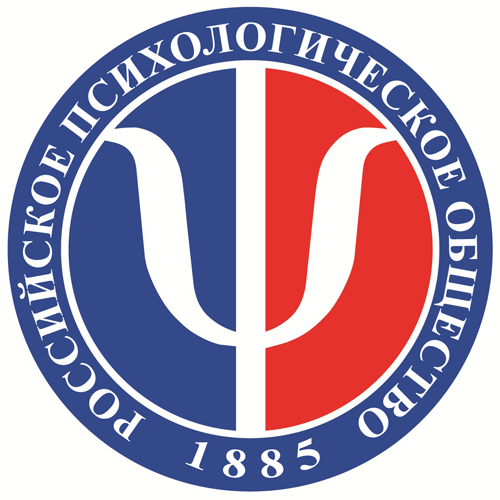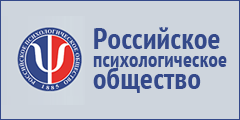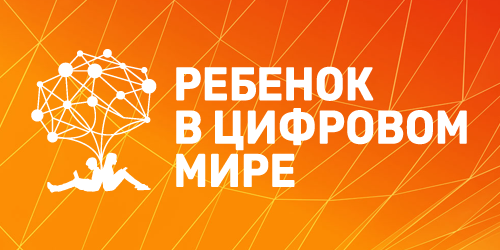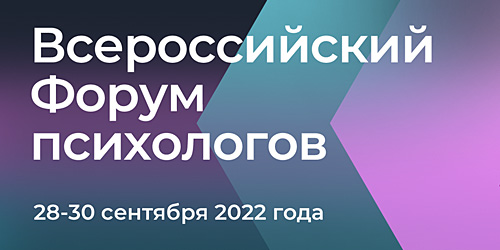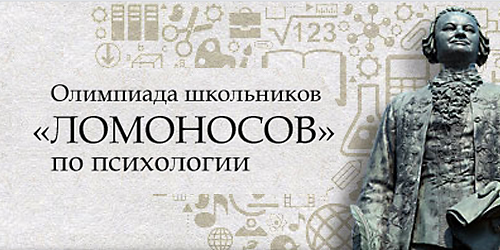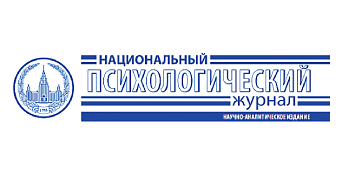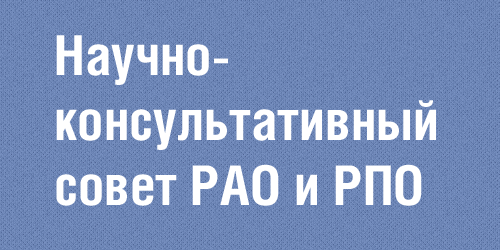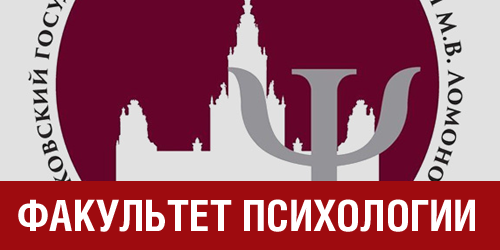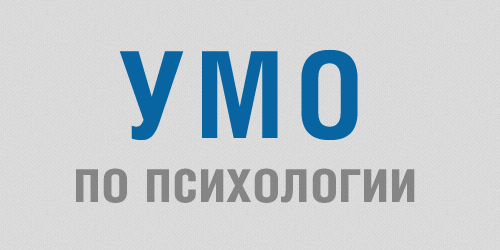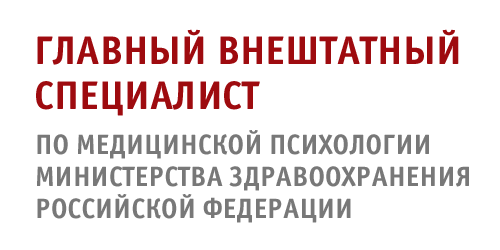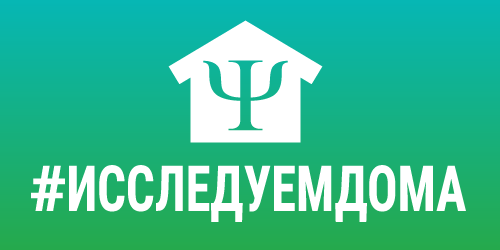Разработка технологии виртуальной реальности VR-PACE для диагностики и тренировки уровня мастерства хоккеистов
Аннотация
Актуальность. В последнее десятилетие технологии виртуальной реальности (VR) активно внедряются в тренировочный процесс в разных видах спорта. Вместе с тем, существуют исследования, показывающие несостоятельность VR для формирования спортивных навыков и их переноса в реальные условия. Но несмотря на это, использование VR может быть полезным для отработки специфических моторных навыков и когнитивных функций, например, антиципации.
Цель. Разработка технологии VR-PACE (VR Technology for training Puck hitting And hoСkey skill Effectiveness) с использованием виртуальной реальности, направленной на диагностику и анализ уровня мастерства хоккеиста, а также тренировку специальных навыков.
Методы.В рамках исследования была разработана имитационная виртуальная среда, моделирующая хоккейную площадку (ледовая арена в Сочи) и задающая четыре уровня сложности (четыре блока), зависящие от скорости шайбы и расстояния до нее. В исследовании приняли участие 22 человека, 13 из которых были профессиональными хоккеистами (Mage=20±2,5), а семь – новичками в хоккее (Mage=20±1.4).
Результаты. Было выявлено, что профессиональные хоккеисты имеют значимо меньшую амплитуду колебаний головы во время отражения шайб, то есть они достаточно хорошо понимают положение своего тела во время определенных действий, и им не нужно наблюдать полную траекторию движения шайбы. Также были выявлены значимые различия в скорости реагирования на предъявляемые шайбы в блоке с самой быстрой скоростью предъявления 2х шайб. Полученные результаты могут свидетельствовать о лучшей сформированности технико-тактического, временного и пространственного факторов у профессиональных хоккеистов.
Выводы. Была продемонстрирована адекватность разработанного инструментария для анализа профессиональных навыков хоккеистов. Также было показано, что уровень мастерства хоккеиста определяется сформированностью комплекса параметров, включающих пространственные, временные, технико-тактические способности. Это проявляется в автоматизации ряда навыков, а также оптимизации двигательных откликов: 1) более высокой и стабильной амплитудой движений на всем интервале наблюдений и минимизацией лишних движений; 2) более высокой скоростью реагирования на более сложные шайбы (приближенные к реальным игровым ситуациям); 3) концентрацией внимания на значимых сигналах, антиципация.
Литература
-
Лашкул А., Федорова М. Методические особенности обучения технике двигательных действий юных хоккеистов-вратарей на начальном этапе подготовки. В сборнике Оптимизация учебно-воспитательного и тренировочного процесса в учебных организациях высшего образования. Здоровый образ жизни как фактор профилактики наркомании. Материалы Всероссийской Научно-Практической Конференции / Под ред. Е.В. Панова. Красноярск. 2020. doi: 10.51980/2020_28_161
-
Леонов С., Поликанова И., Кручинина А., Бугрий Г., Булаева Н., Сухочев П. Сравнение постурального баланса у профессиональных хоккеистов и новичков // материалы международного форума Cognitive Neuroscience. Екатеринбург. 2020.
-
Леонов С.В., Поликанова И.С., Булаева Н.И., Клименко В.А. Особенности использования виртуальной реальности в спортивной практике // Национальный психологический журнал. 2020. № 1 (37). С. 18–30. doi: 10.11621/npj.2020.0102
-
Поликанова И.С., Леонов С.В., Сухочев П.Ю., Бугрий Г.С., Кручинина А.П. Использование технологий виртуальной реальности для подготовки хоккеистов разного уровня мастерства. Материалы IV Всероссийской научно-практической конференции с международным участием по спортивной науке: Подготовка спортивного резерва. Под ред. М.: ГКУ «ЦСТиСК» Москомспорта. 2020
-
Azraai, N.Z., Awang Soh, A.A.S., Mat Jafri, M.Z. (2017). Power estimation of martial arts movement using 3D motion capture camera. Proceedings Volume 10335, Digital Optical Technologies; 103351T. doi: 10.1117/12.2270135
-
Bishop, D., Lawrence, S., Spencer, M. (2003). Predictors of repeated-sprint ability in elite female hockey players. Journal of Science and Medicine in Sport, 6(2), 199–209. doi: 10.1016/S1440-2440(03)80255-4
-
Bracko, M.R., Fellingham, G.W., Hall, L.T., Fisher, A.G., Cryer, W. (1998). Performance skating characteristics of professional ice hockey forwards. Sports Medicine, Training and Rehabilitation, 8(3), 251–263. doi: 10.1080/15438629809512531
-
Buns, M. (2020). Impact of virtual reality training on real-world hockey skill: an intervention trial. Journal of Sports Science, 8(1). doi: 10.17265/2332-7839/2020.01.002
-
Chang, R., Turcotte, R., Pearsall, D. (2009). Hip adductor muscle function in forward skating. Sports Biomechanics, 8(3), 212–222. doi: 10.1080/14763140903229534
-
Cross, R., Lindsey, C. (2018). The Slap Shot in Ice Hockey. The Physics Teacher, 56(1), 7–9. doi: 10.1119/1.5018677
-
Cuperus, A.A., van der Ham, I.J.M. (2016). Virtual reality replays of sports performance: Effects on memory, feeling of competence, and performance. Learning and Motivation, 56, 48–52. doi: 10.1016/j.lmot.2016.09.005
-
Düking, P., Holmberg, H.C., Sperlich, B. (2018). The potential usefulness of virtual reality systems for athletes: a short SWOT analysis. Frontiers in Physiology, 9, 128 doi: 10.3389/fphys.2018.00128
-
Fait, P.E., McFadyen, B.J., Reed, N., Zabjek, K., Taha, T., Keightley, M. (2011). Increasing task complexity and ice hockey skills of youth athletes. Perceptual and Motor Skills, 112(1), 29–43. doi: 10.2466/05.10.23.25.PMS.112.1.29-43
-
Farley, O.R.L., Spencer, K., Baudinet, L. (2019). Virtual reality in sports coaching, skill acquisition and application to surfing: a review. Journal of Human Sport and Exercise, 15(3). doi: 10.14198/jhse.2020.153.06
-
Faure, C., Limballe, A., Bideau, B., Kulpa, R. (2020). Virtual reality to assess and train team ball sports performance: A scoping review. Journal of Sports Sciences, 38(2), 192–205. doi: 10.1080/02640414.2019.1689807
-
Fortier, A., Turcotte, R.A., Pearsall, D.J. (2014). Skating mechanics of change-of-direction manoeuvres in ice hockey players. Sports Biomechanics, 13(4), 341–350. doi: 10.1080/14763141.2014.981852
-
Gray, R. (2017). Transfer of training from virtual to real baseball batting. Frontiers in Psychology, 8, 2183. doi: 10.3389/fpsyg.2017.02183
-
Harris, D.J., Buckingham, G., Wilson, M.R., Brookes, J., Mushtaq, F., Mon-Williams, M., Vine, S.J. (2020). The effect of a virtual reality environment on gaze behaviour and motor skill learning. Psychology of Sport and Exercise, 50, 101721. doi: 10.1016/j.psychsport.2020.101721
-
Ingram, H.A., van Donkelaar, P., Cole, J., Vercher, J.L., Gauthier, G.M., Miall, R.C. (2000). The role of proprioception and attention in a visuomotor adaptation task. Experimental Brain Research, 132(1), 114–126. doi: 10.1007/s002219900322
-
Isaev, A.V., Korshunov, A.V., Leonov, S.V., Sanoyan, T.R., Veraksa, A.N. (2016). Quantitative and qualitative indicators of developing anticipation skills in junior wrestling athletes. Procedia - Social and Behavioral Sciences, 233, 186–191. doi: 10.1016/j.sbspro.2016.10.191
-
Isogawa, M., Mikami, D., Fukuda, T., Saijo, N., Takahashi, K., Kimata, H., Kashino, M. (2018). What can VR systems tell sports players? reaction-based analysis of baseball batters in virtual and real worlds. 2018 IEEE Conference on Virtual Reality and 3D User Interfaces (VR), (pp.587–588). doi: 10.1109/VR.2018.8446073
-
Katz, L., Parker, J., Tyreman, H., Kopp, G., Levy, R., Chang, E. (2006). Virtual reality in sport and wellness: Promise and reality. International Journal of Computer Science in Sport, 4(1), 4-16.
-
Lafontaine, D. (2007). Three-dimensional kinematics of the knee and ankle joints for three consecutive push-offs during ice hockey skating starts. Sports Biomechanics, 6(3), 391–406. doi: 10.1080/14763140701491427
-
Lammfromm, R., Gopher, D. (2011). Transfer of skill from a virtual reality trainer to real juggling. BIO Web of Conferences, 1, 00054. doi: 10.1051/bioconf/20110100054
-
Le Noury, P., Buszard, T., Reid, M., Farrow, D. (2021). Examining the representativeness of a virtual reality environment for simulation of tennis performance. Journal of Sports Sciences, 39(4), 412–420. doi: 10.1080/02640414.2020.1823618
-
Mann, D.T.Y., Williams, A.M., Ward, P., Janelle, C.M. (2007). Perceptual-cognitive expertise in sport: a meta-analysis. Journal of Sport and Exercise Psychology, 29(4), 457–478. doi: 10.1123/jsep.29.4.457
-
Marino, G.W. (1977). Kinematics of ice skating at different velocities. research quarterly. American Alliance for Health, Physical Education and Recreation, 48(1), 93–97. doi: 10.1080/10671315.1977.10762155
-
Michalski, S.C., Szpak, A., Saredakis, D., Ross, T.J., Billinghurst, M., Loetscher, T. (2019). Getting your game on: using virtual reality to improve real table tennis skills. PLOS ONE, 14(9), e0222351. doi: 10.1371/journal.pone.0222351
-
Montgomery, D.L. (1988). Physiology of ice hockey: Sports Medicine, 5(2), 99–126. doi: 10.2165/00007256-198805020-00003
-
Mori, S., Ohtani, Y., Imanaka, K. (2002). Reaction times and anticipatory skills of karate athletes. Human Movement Science, 21(2), 213–230. doi: 10.1016/S0167-9457(02)00103-3
-
Morris-Binelli, K., Müller, S., van Rens, F.E.C.A., Harbaugh, A.G., Rosalie, S.M. (2021). Individual differences in performance and learning of visual anticipation in expert field hockey goalkeepers. Psychology of Sport and Exercise, 52, 101829. doi: 10.1016/j.psychsport.2020.101829
-
Pearsall, D., Montgomery, D., Rothsching, N., Turcotte, R. (1999). The influence of stick stiffness on the performance of ice hockey slap shots. Sports Engineering, 2(1), 3–11. doi: 10.1046/j.1460-2687.1999.00018.x
-
Polikanova, I., Yakushina, A., Leonov, S., Kruchinina, A., Chertopolokhov, V., Liutsko, L. (2021). Study of differences in motor reactions and performances in professional ice hockey players and not experienced participants using virtual reality (VR) technology [Preprint]. Behavioral sciences. doi: 10.20944/preprints202103.0776.v1
-
Poolton, J.M., Masters, R.S.W., Maxwell, J.P. (2006). The influence of analogy learning on decision-making in table tennis: Evidence from behavioral data. Psychology of Sport and Exercise, 7, 677-688.
-
Shell, J.R., Robbins, S.M.K., Dixon, P.C., Renaud, P.J., Turcotte, R.A., Wu, T., Pearsall, D.J. (2017). Skating start propulsion: three-dimensional kinematic analysis of elite male and female ice hockey players. Sports Biomechanics, 16(3), 313–324. doi: 10.1080/14763141.2017.1306095
-
Shim, J., Carlton, L.G., Kwon, Y.H. (2006). Perception of kinematic characteristics of tennis strokes for anticipating stroke type and direction. Research Quarterly for Exercise and Sport, 77(3), 326–339. doi: 10.1080/02701367.2006.10599367
-
Song, P., Xu, S., Fong, W.T., Chin, C.L., Chua, G.G., Huang, Z. (2012). An immersive VR system for sports education. IEICE Transactions on Information and Systems, E95.D(5), 1324–1331. doi: 10.1587/transinf.E95.D.1324
-
Strughold, H. (1956) A simple classification of the present and future stages of manned flight. Journal of Aviation Medicine, XXVII, 328-331.
-
Tirp, J., Steingröver, C., Wattie, N., Baker, J., Schorer, J. (2015). Virtual realities as optimal learning environments in sport – A transfer study of virtual and real dart throwing. Psychological Test and Assessment Modeling, 57(1), 57-69
-
Todorov, E., Shadmehr, R., Bizzi, E. (1997). Augmented feedback presented in a virtual environment accelerates learning of a difficult motor task. Journal of Motor Behavior, 29(2), 147–158. doi: 10.1080/00222899709600829
-
Tous Ral, J.M., Liutsko, L. (2014). Human errors: their psychophysical bases and the proprioceptive diagnosis of temperament and character (DP-TC) as a tool for measuring. Psychology in Russia: State of the Art, 7(2), 48–63. doi: 10.11621/pir.2014.0205
-
Tsai, W.L., Su, L., Ko, T.Y., Yang, C.T., Hu, M.C. (2019). Improve the decision-making skill of basketball players by an action-aware VR training system. 2019 IEEE Conference on Virtual Reality and 3D User Interfaces (VR), (pp.1193–1194). doi: 10.1109/VR.2019.8798309
-
Tyler, T.F., Nicholas, S.J., Campbell, R.J., McHugh, M.P. (2001). the association of hip strength and flexibility with the incidence of adductor muscle strains in professional ice hockey players. The American Journal of Sports Medicine, 29(2), 124–128. doi: 10.1177/03635465010290020301
-
Tyreman, H., Parker, J.R., Katz, L. (2008). Ice hockey goaltenders’ strategies, reaction times and anticipation times in two- and three-dimensional virtual environments. 7.IACSS Preolympic Congress on Computer Science in Sport, Nanjing, China.
-
Upjohn, T., Turcotte, R., Pearsall, D.J., Loh, J. (2008). Three-dimensional kinematics of the lower limbs during forward ice hockey skating. Sports Biomechanics, 7(2), 206–221. doi: 10.1080/14763140701841621
-
Veraksa, A.N., Gorovaya, A.E., Leonov, S.V., Pashenko, A.K., Fedorov, V.V. (2012). The possibility of using sign and symbolic tools in the development of motor skills by beginning soccer players. Psychology in Russia: State of the art, 5, 473-497.
-
Vignais, N., Kulpa, R., Brault, S., Presse, D., Bideau, B. (2015). Which technology to investigate visual perception in sport: Video vs. virtual reality. Human Movement Science, 39, 12–26. doi: 10.1016/j.humov.2014.10.006
-
Walsh, M., Slattery, E., McMath, A., Cox, R., Haworth, J. (2018). Training history constrains postural sway dynamics: A study of balance in collegiate ice hockey players. Gait & Posture, 66, 278–282. doi: 10.1016/j.gaitpost.2018.09.009
-
Wilson, K., Snydmiller, G., Game, A., Quinney, A., Bell, G. (2010). The development and reliability of a repeated anaerobic cycling test in female ice hockey players. Journal of Strength and Conditioning Research, 24(2), 580–584. doi: 10.1519/JSC.0b013e3181ccb1a1
-
Wood, G., Wright, D.J., Harris, D. et al. (2021) Testing the construct validity of a soccer-specific virtual reality simulator using novice, academy, and professional soccer players. Virtual Reality, 25, 43–51, doi: 10.1007/s10055-020-00441-x
-
Wu, T.C., Pearsall, D., Hodges, A., Turcotte, R., Lefebvre, R., Montgomery, D., Bateni, H. (2003). The performance of the ice hockey slap and wrist shots: The effects of stick construction and player skill. Sports Engineering, 6(1), 31–39. doi: 10.1007/BF02844158
Поступила: 20.12.2021
Принята к публикации: 04.02.2022
Дата публикации в журнале: 30.03.2022
Ключевые слова: VR-PACE; виртуальная реальность; двигательная реакция; анализ позы; хоккей с шайбой; реакция на стимул
DOI: 10.11621/vsp.2022.01.12
Поликанова, И.C., Леонов, С.В., Якушина, А.А., Люцко, Л.Н., Бугрий, Г.С., Кручинина, А.П., Чертополохов, В.А. (2022). Разработка технологии виртуальной реальности VR-PACE для диагностики и тренировки уровня мастерства хоккеистов. Вестник Московского университета. Серия 14. Психология, 45(1), 269-297. https://doi.org/10.11621/vsp.2022.01.12
скопировано

Это произведение доступно по лицензии Creative Commons «Attribution-NonCommercial» («Атрибуция-Некоммерчески») 4.0 Всемирная

